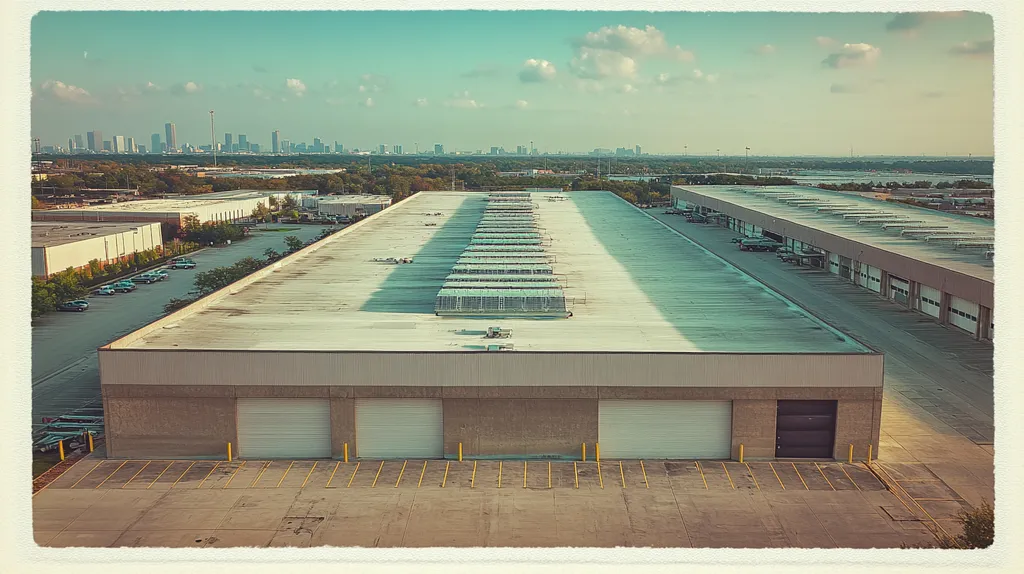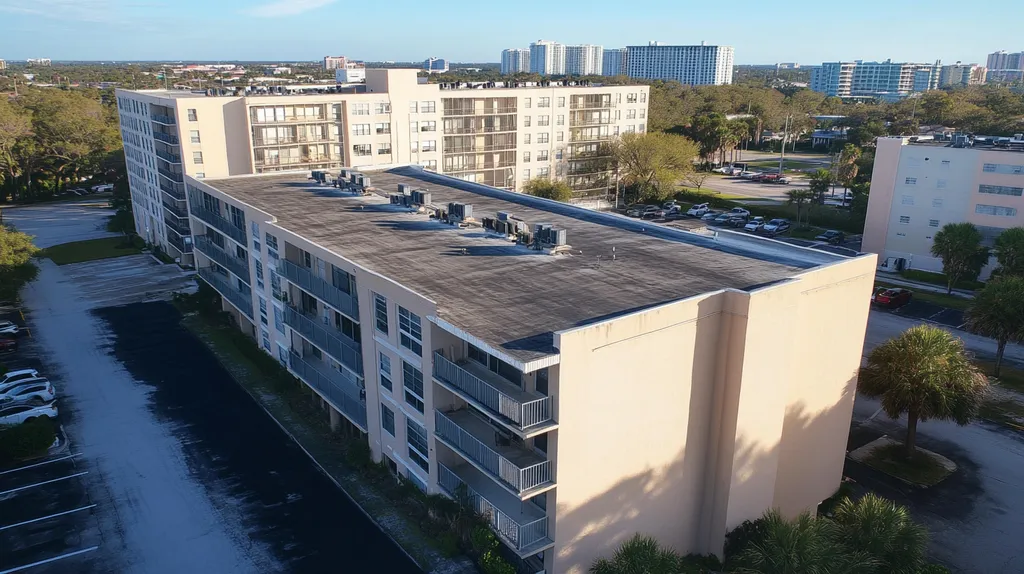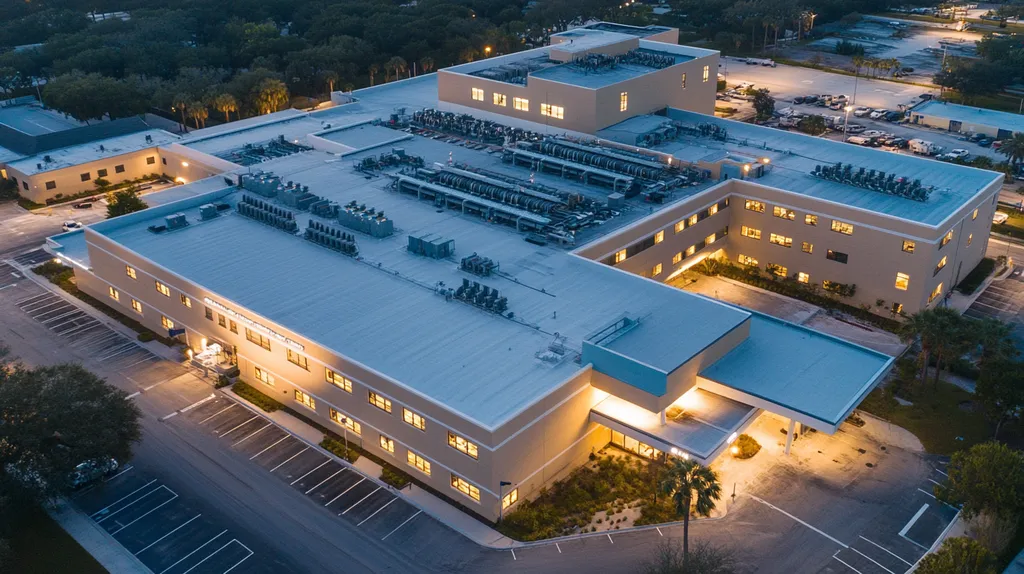Welcome to today’s Battle Royale featuring two roofing heavyweights: “Silicone Coatings” in the east corner versus “Polyurethane Coatings” in the west!
Tonight’s showdown pits these contenders against each other across six punishing rounds designed to test every aspect of their performance for Commercial Roof Coating Systems.
At stake? Millions in potential costs, decades of building protection, and the critical performance demands of modern commercial and industrial facilities.
Our professional judging panel will evaluate each round on technical merit, real-world performance, and value delivery. After all six rounds, we’ll declare our ultimate champion.
Ladies and gentlemen, facility managers and building owners… it’s time to rumble!
ROUND 1: INITIAL COSTS & INSTALLATION
When evaluating commercial roof coating systems, the initial investment and installation process can impact operational costs for decades. Making the wrong choice between silicone and polyurethane coatings can lead to premature system failure, unnecessary maintenance expenses, and potential business disruptions. Understanding the true costs, installation requirements, and timeline implications helps facility managers make decisions that protect both their buildings and budgets.
Material Expenses
Material costs represent a significant portion of any commercial roof coating project. While silicone coatings typically cost 15-25% more per gallon than polyurethane options, they generally require fewer coats to achieve proper thickness.
Silicone coatings can often achieve desired performance with a single coat application, reducing the total material needed. Their high solid content means less material waste and better coverage rates per gallon.
Polyurethane systems usually require multiple coats and primers, which increases the total material quantity needed. Despite lower per-gallon costs, the need for additional materials often equalizes or exceeds silicone’s total material expense.
Given the superior coverage rates and reduced material requirements, silicone coatings demonstrate an ADVANTAGE in material expenses.
Installation Complexity
Installation complexity directly affects labor costs and project success rates. Silicone coatings offer simpler application procedures with minimal surface preparation requirements beyond basic cleaning and repair.
The forgiving nature of silicone allows application in higher humidity conditions and provides excellent adhesion to most substrates. This flexibility reduces the risk of installation errors and callbacks.
Polyurethane coatings demand extensive surface preparation and strict environmental controls during application. They require precise temperature and humidity conditions, increasing the risk of application failures.
Based on easier application requirements and reduced installation risks, silicone coatings earn an ADVANTAGE in installation complexity.
Project Timeline
Project duration affects both direct costs and business disruption. Silicone coating installations typically complete in half the time of comparable polyurethane projects due to simpler preparation requirements and faster curing times.
Most silicone coatings cure within 24 hours, allowing for faster project completion and quicker return to service. This rapid curing also reduces vulnerability to weather-related delays and complications.
Polyurethane systems require longer curing times between coats and final cure, often extending projects by several days. Weather sensitivity can further extend timelines, especially in humid conditions.
With faster completion times and reduced weather dependencies, silicone coatings secure an ADVANTAGE in project timeline considerations.
ROUND 1 WINNER: SILICONE COATINGS
ROUND 2: DURABILITY & LIFESPAN
Commercial roof coating performance can mean the difference between decades of protection and premature system failure requiring costly replacement. The wrong choice between silicone and polyurethane coatings often leads to unexpected repairs, disrupted operations, and budget overruns that could have been avoided. Modern facilities face increasingly extreme weather conditions that put roofing systems to the ultimate test.
Weather Resistance
A roof coating’s ability to withstand harsh environmental conditions directly impacts its long-term effectiveness. UV radiation, temperature fluctuations, and moisture exposure continuously test coating integrity.
Silicone coatings excel in weather resistance due to their inorganic composition, maintaining flexibility and waterproofing properties even after decades of UV exposure. Their molecular structure remains stable through extreme temperature cycles, preventing brittleness and cracking.
Polyurethane coatings initially provide excellent weather protection but can degrade more quickly under intense UV exposure. While they offer good temperature resistance, their organic composition makes them more susceptible to oxidation and chalking over time.
Given their superior long-term weather resistance, silicone coatings earn an ADVANTAGE in this category.
Physical Durability
Daily wear from foot traffic, equipment maintenance, and physical impacts tests a coating’s structural integrity. The ability to maintain waterproofing properties despite these challenges is crucial for long-term performance.
Silicone coatings provide moderate impact resistance and maintain their protective properties even when scratched or abraded. Their self-leveling characteristics help them recover from minor surface damage.
Polyurethane coatings demonstrate superior tensile strength and abrasion resistance, making them especially durable against physical wear. Their excellent impact resistance helps prevent coating failure from routine maintenance traffic.
With better resistance to physical wear, polyurethane coatings claim an ADVANTAGE in physical durability.
Service Life
The total service life of a coating system determines its true cost-effectiveness and value to facility operations. Longer-lasting systems reduce replacement frequency and minimize disruption to business activities.
Silicone coatings typically deliver 15-20 years of service with minimal maintenance requirements. Their resistance to weathering and stable chemical composition contribute to this extended lifespan.
Polyurethane systems generally require replacement or significant restoration after 7-12 years. While proper maintenance can extend their service life, they typically need more frequent renewal than silicone alternatives.
Based on longer service life and reduced maintenance needs, silicone coatings secure an ADVANTAGE in this category.
ROUND 2 WINNER: SILICONE COATINGS
ROUND 3: PERFORMANCE FACTORS
The performance capabilities of commercial roof coatings directly impact building protection, energy costs, and long-term maintenance requirements. Making an uninformed choice between silicone and polyurethane systems can result in premature coating failure, excessive energy consumption, and compromised building protection. Understanding how these coatings perform under real-world conditions helps facility managers select systems that deliver lasting value and reliable protection.
Water Resistance
Water infiltration represents the single greatest threat to commercial roof integrity. A coating’s ability to prevent moisture penetration determines its effectiveness in protecting valuable building assets and operations.
Silicone coatings provide exceptional water resistance due to their hydrophobic molecular structure. They maintain waterproof properties even under prolonged ponding conditions and resist degradation from constant moisture exposure.
Polyurethane coatings offer good initial water resistance but can become compromised if water penetrates any surface imperfections. Their organic composition makes them more susceptible to moisture-related deterioration over time.
Given superior long-term waterproofing capabilities, silicone coatings demonstrate an ADVANTAGE in water resistance.
Temperature Performance
Extreme temperature fluctuations stress coating systems through expansion, contraction, and thermal shock. The ability to maintain flexibility and adhesion across temperature ranges directly affects coating longevity.
Silicone coatings remain flexible from -80°F to 350°F without cracking or losing adhesion. This exceptional temperature stability prevents thermal cycling damage and maintains protective properties year-round.
Polyurethane coatings perform well within moderate temperature ranges but can become brittle in extreme cold or soften excessively in high heat. This temperature sensitivity can lead to premature aging and reduced protection.
Based on superior temperature range performance, silicone coatings claim an ADVANTAGE in this category.
Chemical Resistance
Commercial roofs face exposure to industrial emissions, acid rain, and atmospheric pollutants. A coating’s chemical resistance capabilities determine its ability to maintain protection despite these environmental challenges.
Silicone coatings demonstrate excellent resistance to most industrial chemicals and atmospheric contaminants. Their inert chemical structure prevents degradation from acid rain and other corrosive exposures.
Polyurethane coatings provide good resistance to mild chemicals but can break down when exposed to stronger acids or industrial pollutants. This vulnerability may require more frequent maintenance or premature replacement.
With superior chemical resistance properties, silicone coatings secure an ADVANTAGE in this category.
ROUND 3 WINNER: SILICONE COATINGS
ROUND 4: MAINTENANCE REQUIREMENTS
Maintenance decisions for commercial roof coatings directly impact building protection and operational costs for decades. Without proper upkeep, even the best coating system can fail prematurely, leading to extensive damage, business disruption, and emergency repairs that cost 300% more than planned maintenance. Understanding the maintenance profiles of silicone and polyurethane systems helps facility managers protect their roofing investments and avoid costly failures.
Inspection Requirements
Regular inspections form the foundation of effective roof coating maintenance. Silicone coatings maintain their protective properties with minimal degradation, requiring only annual professional inspections to verify system integrity.
These coatings resist dirt accumulation and maintain reflectivity naturally, reducing the frequency of cleaning interventions. Their stable chemical structure means fewer inspection points and simpler evaluation protocols.
Polyurethane systems demand quarterly inspections due to their susceptibility to UV degradation and mechanical wear. Their organic composition requires careful monitoring for signs of oxidation, delamination, and loss of protective properties.
With reduced inspection frequency and simplified protocols, silicone coatings demonstrate an ADVANTAGE in inspection requirements.
Repair Procedures
The complexity and frequency of repairs significantly impact maintenance costs and building protection. Silicone coatings allow for simple spot repairs without extensive surface preparation or system compromise.
New silicone material bonds readily to existing coating, creating seamless repairs that maintain water-tight integrity. This characteristic allows for quick, cost-effective maintenance interventions.
Polyurethane repairs often require extensive preparation and precise application conditions. The challenge of achieving proper adhesion between new and existing material can necessitate larger repair areas than the actual damage.
Given their superior repair flexibility and simpler procedures, silicone coatings secure an ADVANTAGE in repair procedures.
Long-term Care
Sustainable maintenance strategies depend on a coating’s ability to retain performance characteristics over time. Silicone coatings maintain their physical properties and protective capabilities with minimal intervention.
These systems resist chalking and maintain flexibility without additional treatments or restoration coats. Their stable performance characteristics simplify long-term maintenance planning and budgeting.
Polyurethane systems often require restoration coats or surface treatments to maintain protection levels. Their performance characteristics can degrade more rapidly, demanding more intensive long-term care protocols.
Based on reduced maintenance intensity and predictable long-term performance, silicone coatings claim an ADVANTAGE in long-term care.
ROUND 4 WINNER: SILICONE COATINGS
ROUND 5: SUSTAINABILITY CREDENTIALS
Modern commercial buildings face increasing pressure to reduce their environmental impact while maintaining operational efficiency. With roofing systems accounting for up to 40% of building energy loss, selecting sustainable coating solutions has become critical for both environmental stewardship and cost control. The choice between silicone and polyurethane coatings can significantly impact a facility’s carbon footprint, energy consumption, and waste generation for decades.
Environmental Impact
A coating’s environmental impact extends far beyond its initial application. The primary considerations include VOC emissions during installation, energy efficiency during service life, and total carbon footprint.
Silicone coatings typically contain lower VOC levels and maintain their solar reflectivity throughout their service life. Their high-solids formulations reduce harmful emissions during application while providing superior thermal performance.
Polyurethane coatings often require multiple layers and primers, increasing VOC emissions during installation. Their reflective properties can degrade more rapidly, leading to decreased energy efficiency over time.
Based on lower emissions and sustained energy efficiency, silicone coatings demonstrate an ADVANTAGE in environmental impact.
Longevity and Waste Reduction
The lifespan of a coating system directly affects its sustainability profile through material consumption and waste generation. Regular maintenance proves essential for maximizing service life and minimizing environmental impact.
Silicone coatings typically last 15-20 years with proper care, requiring minimal maintenance to maintain performance. Preventative maintenance costs average 5-9 cents per square foot, delivering significant value through extended service life. (source: West Roofing Systems)
Polyurethane systems generally require replacement or restoration within 7-12 years, generating more waste and consuming additional resources for reapplication.
Given their superior longevity and reduced waste generation, silicone coatings secure an ADVANTAGE in this category.
Resource Conservation
Efficient use of resources during installation and maintenance impacts both environmental sustainability and operational costs. Material requirements and recoating needs significantly affect resource consumption.
Silicone coatings achieve desired performance with single-coat applications, minimizing material usage. Their ability to be recoated directly over existing layers reduces preparation waste and conserves resources.
Polyurethane systems typically require multiple coats and extensive surface preparation, consuming more materials throughout their lifecycle. Their more complex maintenance requirements lead to increased resource consumption over time.
Based on efficient material utilization and simplified maintenance, silicone coatings claim an ADVANTAGE in resource conservation.
ROUND 5 WINNER: SILICONE COATINGS
ROUND 6: SPECIALIZED APPLICATIONS
Commercial roof coatings face increasingly complex challenges as building designs evolve and environmental conditions intensify. With 73% of commercial buildings requiring specialized roofing solutions due to unique architectural features, equipment installations, or environmental exposures, choosing the wrong coating system can lead to premature failure and extensive damage. Understanding how different coatings perform in specialized scenarios helps facility managers protect their investments while meeting specific operational requirements.
High-Traffic Applications
Commercial roofs often serve as platforms for mechanical equipment maintenance, requiring coatings that can withstand regular foot traffic and equipment movement. Silicone coatings show moderate resistance to physical wear but can become slick when wet, potentially creating safety hazards.
Their softer composition makes them more susceptible to damage from heavy maintenance traffic and equipment placement. While they maintain waterproofing properties even when scratched, repeated abrasion can compromise coating thickness.
Polyurethane coatings demonstrate superior wear resistance and maintain excellent traction in wet conditions. Their harder finish better withstands equipment movement and frequent foot traffic without compromising protective properties.
Based on superior physical durability and safety characteristics, polyurethane coatings claim an ADVANTAGE in high-traffic applications.
Equipment-Dense Roofs
Modern commercial roofs often support extensive HVAC systems, solar installations, and communication equipment. Silicone coatings provide excellent protection around equipment penetrations due to their superior adhesion and flexibility.
Their self-leveling properties ensure complete coverage around complex shapes and tight spaces. The material’s stability prevents shrinkage that could compromise seals around equipment mounts.
Polyurethane coatings require more precise application around equipment and often need special reinforcement at penetration points. Their reduced flexibility can lead to separation around mounting points as buildings settle.
Given their superior performance around rooftop equipment, silicone coatings demonstrate an ADVANTAGE in equipment-dense applications.
Complex Geometries
Architectural designs featuring slopes, curves, and multiple elevation changes demand specialized coating performance. Silicone coatings excel on complex surfaces due to their excellent flow characteristics and self-leveling properties.
Their high viscosity prevents running on vertical surfaces while maintaining consistent coverage. The material’s flexibility accommodates building movement without compromising waterproof integrity.
Polyurethane coatings present application challenges on steep slopes and require special techniques for vertical surfaces. Their reduced flow characteristics can result in uneven coverage on complex geometries.
Based on superior application characteristics and performance on complex surfaces, silicone coatings secure an ADVANTAGE in this category.
ROUND 6 WINNER: SILICONE COATINGS
AND THE WINNER IS…
After six grueling rounds of technical evaluation, we have our verdict…
Ladies and gentlemen, in a dominant performance winning FIVE of SIX rounds, your new Commercial Roof Coating Champion is… SILICONE COATINGS!
Silicone coatings delivered a knockout combination of superior weathering resistance, simplified installation, reduced maintenance requirements, and extraordinary environmental credentials. This champion demonstrated particular dominance in water resistance, temperature performance, and long-term value delivery.
However, don’t count polyurethane coatings out completely! These systems remain a formidable contender, especially in high-traffic areas where their superior physical durability and wear resistance make them the preferred choice for maintenance-heavy rooftops.
Important Ringside Notice: Every building brings its own unique challenges into the arena. Local climate conditions, substrate characteristics, and specific facility requirements can all impact coating performance. While this analysis reflects general industry findings, property owners should always consult qualified roofing professionals who can evaluate their specific situation before making a final selection.
Remember, fight fans: In the high-stakes world of commercial roofing, the true victory comes not from blindly following the champion, but from strategically matching your facility’s specific needs with the right contender’s strengths. Now, let’s see those contracts signed and those roofs protected!
FREQUENTLY ASKED QUESTIONS
Q. What are the initial costs for commercial roof coatings?
A. The initial costs for commercial roof coatings vary between silicone and polyurethane options. Silicone coatings can be 15-25% more expensive per gallon but often require fewer coats, leading to reduced material costs. Investing in silicone may ultimately save you from high maintenance and operational expenses in the long run.
Q. How do silicone and polyurethane coatings differ in durability for an industrial roof?
A. Silicone coatings are known for their impressive weather resistance and longevity, often lasting up to 20 years. Meanwhile, polyurethane coatings typically last between 7-12 years and are more prone to UV degradation. This difference impacts your overall maintenance and replacement costs significantly.
Q. Which coating performs better in terms of water resistance for a commercial roof?
A. Silicone coatings excel in water resistance due to their hydrophobic properties, effectively preventing moisture penetration even under prolonged exposure. In contrast, polyurethane coatings may suffer from water-related deterioration if any application imperfections occur, making silicone a more reliable choice.
Q. What are the maintenance requirements for commercial roof coatings?
A. Silicone coatings generally require less frequent inspections, typically just once a year, due to their durability. In comparison, polyurethane systems necessitate more regular checks, often quarterly, to ensure their continued effectiveness against wear and UV degradation. This difference can save you time and effort in the long run.
Q. How do sustainability credentials compare between silicone and polyurethane coatings?
A. Silicone coatings have lower VOC emissions and maintain high solar reflectivity throughout their lifespan, making them a more environmentally friendly choice. Polyurethane coatings tend to emit higher VOCs and their reflective properties may degrade over time, impacting energy efficiency and overall sustainability.
Q. Can specialized applications benefit more from certain coatings?
A. Yes, silicone coatings perform better around equipment and complex geometries due to their flexibility and adhesion properties. These features help protect against water leaks around penetrations and maintain integrity around intricate surfaces, making them ideal for specialized applications in commercial roofing.
Q. What is the average lifespan of coatings for industrial roofs?
A. Silicone coatings can last between 15 to 20 years with proper maintenance, while polyurethane coatings typically last around 7 to 12 years. Choosing a longer-lasting coating can lead to significant savings and reduced operational disruptions over time.










